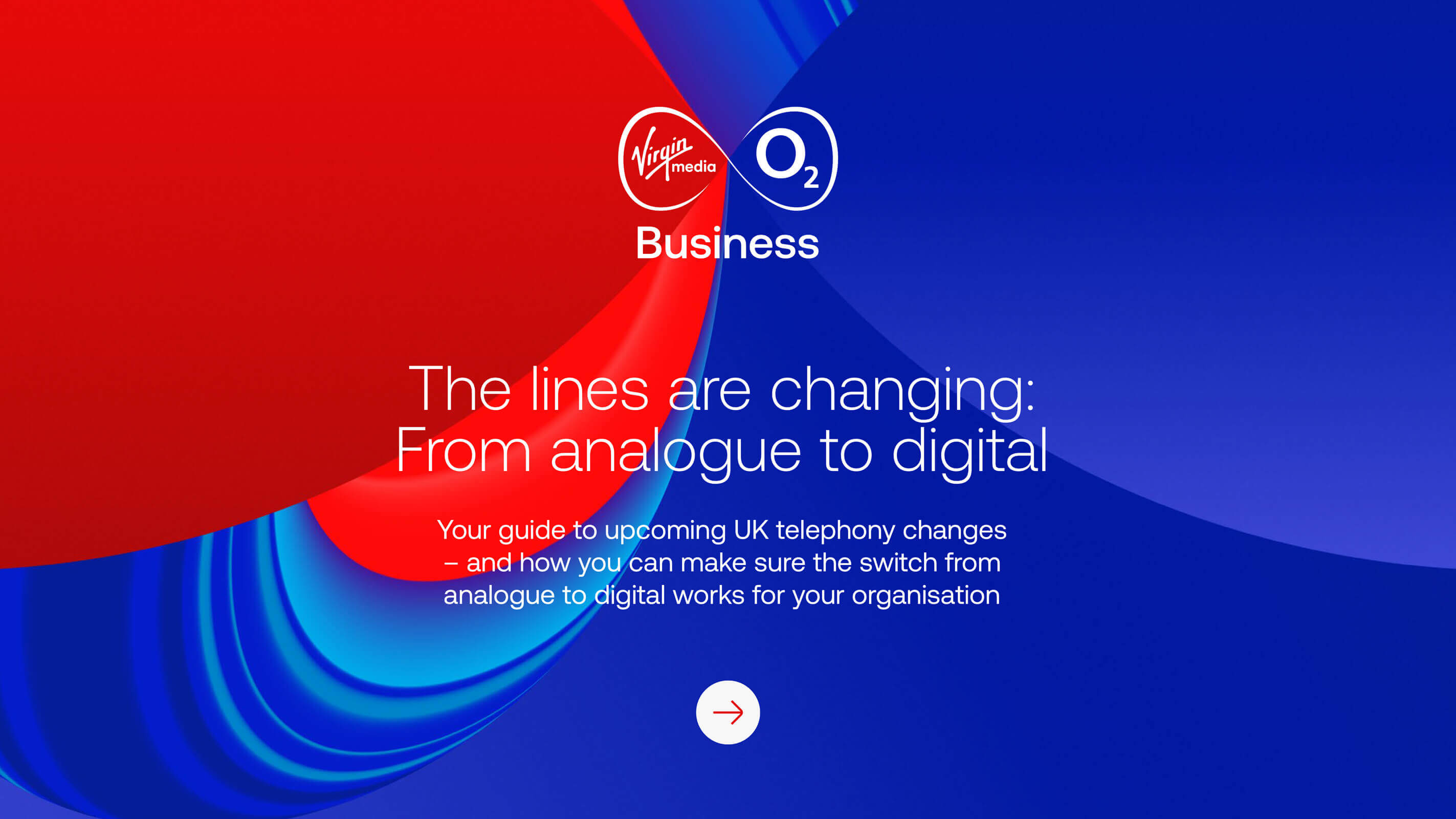Insights
Business trends to look out for in 2024 and beyond
By Ian Hoddle, Director of Enterprise
Author
Ian Hoddle
Director of Enterprise
Virgin Media O2 Business
5 minutes
04th December 2023
Share this article:
Conversations around new technologies such as AI and the metaverse reached a fever pitch in 2023. Looking forward to 2024, this shows no signs of abating.
It’s truly exciting to watch these innovations come to life and seeing how workplace automation, integrated cloud-based tools, virtual meetings spaces and other innovations look set to transform the way we work.
But you may also be wondering how your business can expect to make the most of these innovations if there is no roadmap yet in place?
And as the economic growth forecast has been downgraded by the OBR for the next couple of years, how can you balance your business’s investments in new tech whilst also supporting your bottom line?
Amongst the optimism about what’s next, what can you practically be doing now to ensure you’re ready?
Let’s look at the year ahead to see what action you can take to keep you on the right path, and how technology can help you go further.
Hybrid working tech will only get better
40% of businesses have seen an increase in requests for hybrid work policies in the years following the pandemic, according to the CIPD. And the Flexible Working Bill, which will give workers the right to request flexible working from day one of a new job, will only increase this.
The rise may be down to the influx of new innovations enabling flexible working, from more advanced unified communications (UC) tools to achieve more on the move to secure data-sharing practices.
Cloud-based UC systems are only growing in complexity, with features such as interactive digital whiteboards, real-time data synchronisation across desktop and mobile applications and even wider integration into customer relationship management (CRM) software.
These solutions empower employees to work in the ways that suit them by putting as much information as possible into one seamless point of interaction. And it isn’t just for remote workers – by synchronising data across every tool, employees can switch between their home, office and anywhere in between with ease.
But that ease requires robust connectivity to ensure that your infrastructure can keep up with more demanding tools. What use is a new cloud-based tool if your employees still face frustrating latency issues?
With the Public Telephone Switched Network (PTSN) switch-off approaching in 2025, businesses will need to upgrade their copper networks to full fibre.
And this presents decision makers with an opportunity, not just to switch for a like-for-like infrastructure but to consider how upgraded connectivity will help your employees make the most of the hybrid world.
AI and automation will still be hot topics
It’s clear that AI will transform a huge variety of sectors. Capable of writing code, automating logistics and generating art, it is reshaping our expectations of the future.
This is just one of the factors leading to massive increase in the amount of data we consume. In fact, 175 zettabytes of new data will be created annually by 2025, up from 33 zettabytes in 2018, according to the IDC. That means that by 2025 the IDC estimates humans will interact with data every 18 seconds.
Just recently I had an AI demo by a leading company in this space, which was impacted first hand by the connectivity of their office to the cloud. Underlying infrastructure is going to need significant attention for it to work well.
It’s clear that technology is set to fundamentally change how we work and live. But in just one year, can it really make our businesses better?
The truth is that AI integration into productivity tools can enhance the way your employees work if you ensure you’re in control of how they are used.
Microsoft 365 Copilot, for example, can work across the entire Microsoft Office suite alongside you, automating tasks and freeing you up to focus on the work that really matters. The AI tools are capable of summarising long emails, generating visual slides, analysing your data on the fly and more.
The conversations I’m having with customers at the moment are all about how to ensure employees are ready to get to grips with tools such as this. So it’s important to prioritise upskilling your employees to learn the new skills required to make the most out of AI.
Learning to wield more complex data or partner with people who can will also help you make better business decisions to navigate the future. Our O2 Motion team, for example, produces rich insights on aggregated and anonymised UK population movement data so you can understand your customers better and track trends over time.
Taking time now to engage with the experts in solutions such as O2 Motion and Microsoft 365 will help you understand what the future might look like and where new tools are already capable of boosting your planning and productivity.
ESG will give you a competitive edge
61% of consumers consider it important for companies to be transparent about their environmental impact when making purchasing decisions, according to our recent research.
And this trend only looks set to continue. More environmentally minded consumers and more rigid reporting frameworks such as the Sustainability Disclosure Standards mean sustainability should be top of mind for 2024.
Businesses need to match their ESG commitments with action next year and beyond. But that doesn’t mean doing it alone.
There are new and developing schemes and initiatives out there to help you make a measurable and meaningful difference. Public sector organisations can use the Public Sector Decarbonisation Scheme, for example, which aims to reduce emissions from public sector buildings by 75% by 2036 through initiatives such as grant funding.
And businesses should rely on their suppliers not just to advance their environmental goals but to make a social impact too. I’m proud that schemes like our Tech Donation Programme enable our large enterprise customers to donate smartphones and mobile data to digitally excluded people in local communities at no extra cost.
It means you can recycle your old and unused devices and also make a difference to communities who don’t have access to the digital world. We worked with professional services company Capita to donate over 2,000 devices through this scheme, empowering its employees to make a difference in bridging the digital gap.
As we enter an exciting new future of automation and innovation, it’s important to remember to rely on your suppliers to help. There’s plenty of new technology out there to get to grips with and more challenges to overcome.
But the right experts will have the advice to help you navigate those challenges and put you on the right track for the future.
Want to know about how we can help you go further when it comes to your business and tech next year?
Want to speak to one of the team?
call 0800 064 3790



